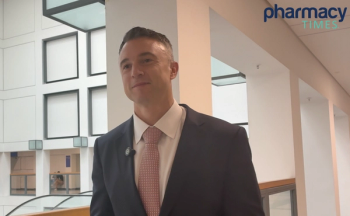
Study: Opioid Agonists Lead to Lower Risk of Fatal Overdose in Patients with OUD
This is one of the first US population-based studies to compare overdose risk among 2 patient populations across an entire state.
Patients with opioid use disorder (OUD) receiving treatment with opioid agonists, such as methadone or buprenorphine, had an 80% lower risk of dying from an opioid overdose compared to patients in treatment without the use of medications, according to researchers at NYU Grossman School of Medicine, Johns Hopkins Bloomberg School of Public Health, and the Maryland Department of Health.
This is one of the first US population-based studies to compare overdose risk among 2 patient populations across an entire state, according to the researchers.
Approximately 60% of patients entering specialty treatment with OUD do not receive medication, which leads to many patients with access to medication treatment prematurely discontinuing care. This is a result of the continuous stigma around the use of medication to treat OUD along with logistical barriers involved in accessing medication treatment, which can lead to relapse and overdose, according to the researchers.
The researchers examined administrative claims records for publicly funded outpatient specialty treatment programs in 2015 and 2016 for 48,274 patients with primary diagnosis of opioid use disorder. Following this, the claims were linked to mortality data from Maryland’s Office of the Chief Medical Examiner.
During the study period, 72% of the patients in treatment received medication, while 28% did not. Four distinct groups of patients were accounted for, including people receiving nonmedication treatment, people receiving treatment with medication, people no longer in treatment but who left nonmedication treatment, and people who left medication treatment.
There was a number of study limitations, such as the findings relying on administrative data used for payment, and the researchers clustering all types of nonmedication treatment together. This caused the researchers to struggle with distinguishing between specific nonmedication treatment types, such as counseling relative to detox.
Additionally, the study only focused on patients receiving outpatient specialty treatment, and assessed overdose risk among patients receiving buprenorphine in primary care settings.
REFERENCE
Medication Treatments Led to 80 Percent Lower Risk of Fatal Overdose for Patients with Opioid Use Disorder than Medication-free Treatments [news release]. New York, NY; NYU Langone Health: February 25, 2020. https://nyulangone.org/news/medication-treatments-led-80-percent-lower-risk-fatal-overdose-patients-opioid-use-disorder Accessed February 27, 2020.
Newsletter
Stay informed on drug updates, treatment guidelines, and pharmacy practice trends—subscribe to Pharmacy Times for weekly clinical insights.




















































































































































































































